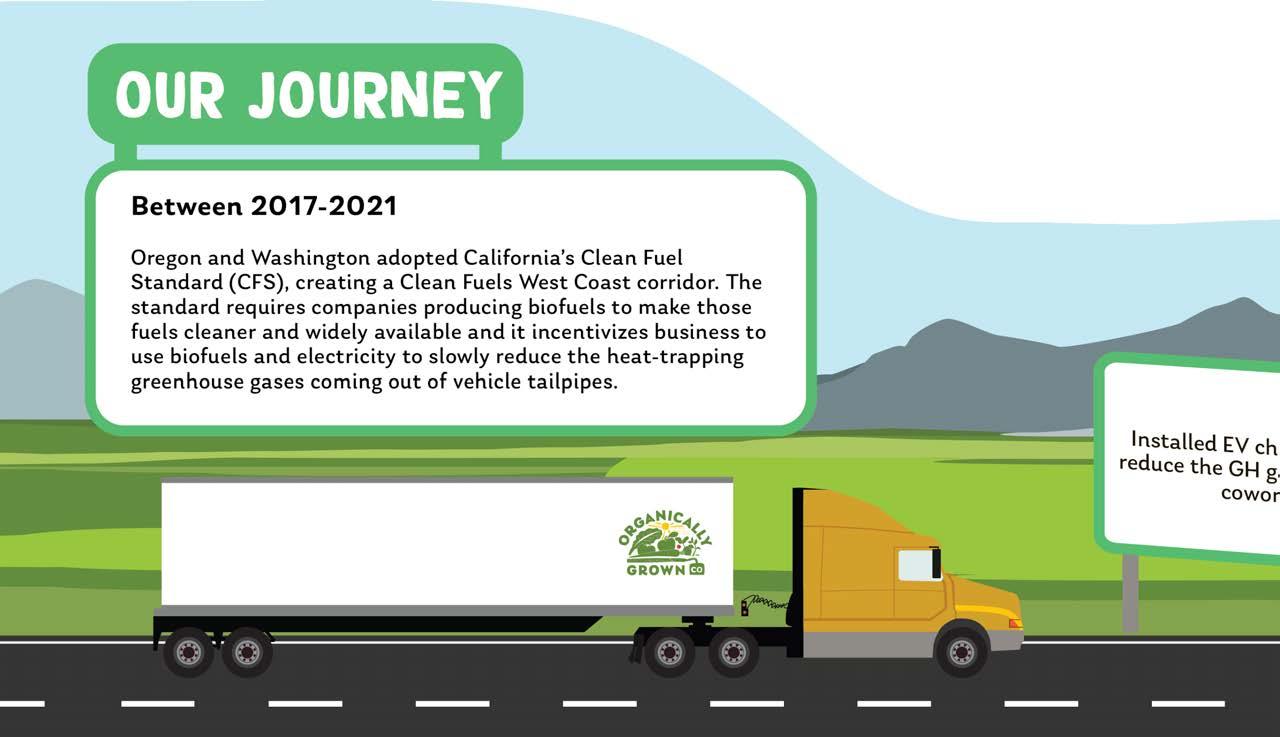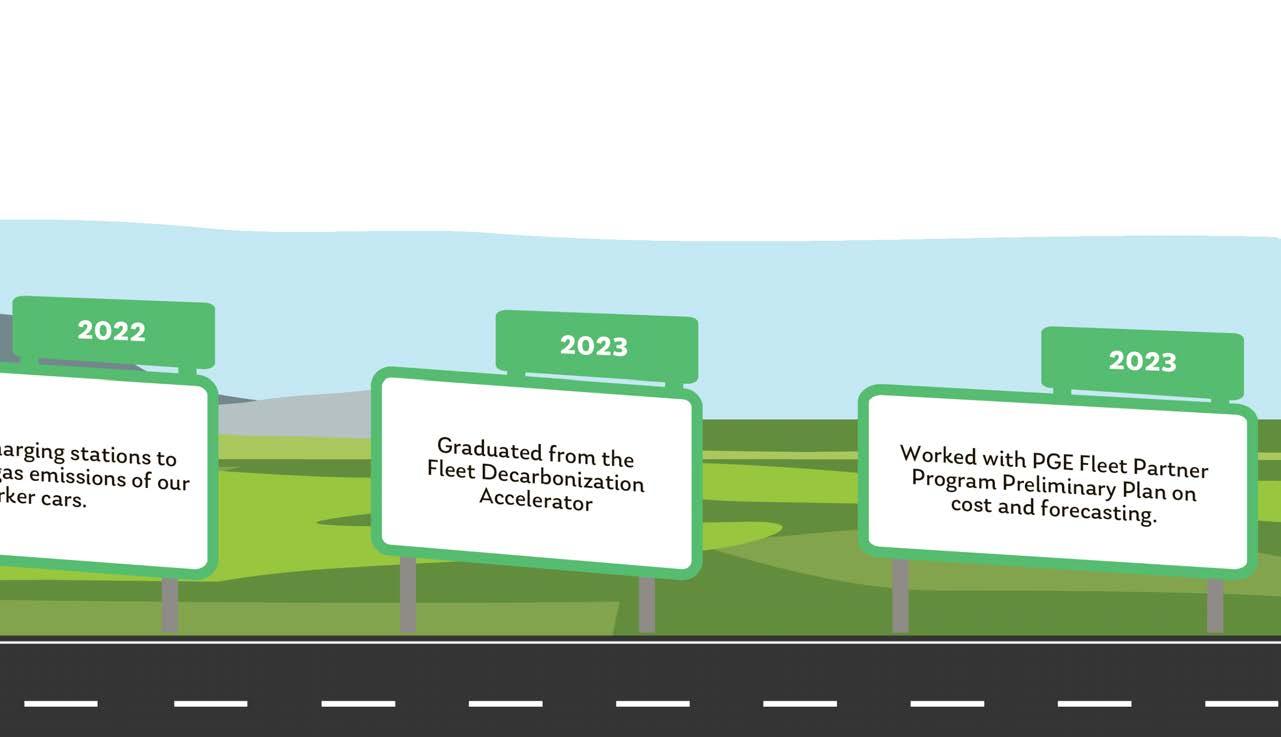
2 minute read
The ROAD to a CARBON-FREE FLEET
Over the years, OGC has made a lot of progress to reduce our climate impact, including purchasing renewable energy credits and carbon offsets. Now, we have set our sights on putting a greener fleet on the road by developing a roadmap to fleet decarbonization. A greener fleet means less carbon in the atmosphere, less particulate matter in the air and healthier communities.
“In addition to promoting organic, this is one of the most important things we can do to reduce our carbon footprint, make our air cleaner and reduce the health impacts of toxic air pollution on our coworkers and communities close to transportation corridors,” said Teak Wall, OGC’s Sustainability Manager.
OGC has a team charting a course to reduce our greenhouse gas emissions in our transportation operation. The road to a decarbonized fleet is not a smooth one, and we will need to overcome operational obstacles. Here’s an update on our forward focus and the road ahead.
PLANNING & PROGRESS
Currently we’re using best practices to curb our emissions. That includes analyzing our routes and equipment to look for ways to reduce our impact. Pre-cooling our refrigerated trailers electrically with our shore power system instead of idling using diesel and exploring the use of low carbon alternative fuels like hydrogen and R99 renewable diesel.
Earlier this year, OGC’s transportation and sustainability leaders took part in the Fleet Decarbonization Accelerator, led by the
decarbonization:
INFRASTRUCTURE & EQUIPMENT
We’re always looking for better ways to make our trucks cleaner and kinder to the environment. Including:

Exploring what options are available, when they will be ready, and what we need to set up to support these cleaner vehicles.
Partnering with Portland General Electric to design a plan for someday charging our entire fleet at our Portland facility. Right now, our Portland facility can already support charging two electric trucks that drive short distances without much change needed.
Working with the Electrification Coalition and our utilities to figure out how much we can save by using electric trucks over the lifespan of the vehicle.
Using a program that rewards us with money for using low-carbon fuel standards. This helps us pay for charging coworker cars, forklifts and trailer shore power. Soon, this program will also help with electricity costs for electric trucks.
The Road Ahead
While mapping our journey to a carbon-free fleet we’ll face two key challenges:

Supply & Demand: California’s Clean Fuel Standards have put them ahead in adopting best practices for reducing carbon emissions. As a result, truck manufacturers focus on selling new trucks to California companies. Oregon and Washington have also adopted the Advanced Clean Truck Rule, which will gradually require more zero-emission trucks starting in 2025, giving us time to transition our fleet.
Challenges for “Fueling”: Heavy trucks needing large batteries for a viable range of over 10,000 miles per month require robust charging infrastructure, which is not as readily available as it is for passenger cars. This leads to longer charging times, downtime, and the need for specialized parking. The infrastructure for electric recharging and hydrogen refueling for commercial carriers is still in its early stages, but further investments are expected to accelerate growth in the late 2020s and 2030s.
Interested in Learning More?
Follow our journey to a carbon-free fleet. We’ll be providing updates in the coming months. We would love to hear from you about your own progress towards carbonfree operations.
OGC has certified organic handling facilities featuring different temperature zones to meet the requirements of your product.










